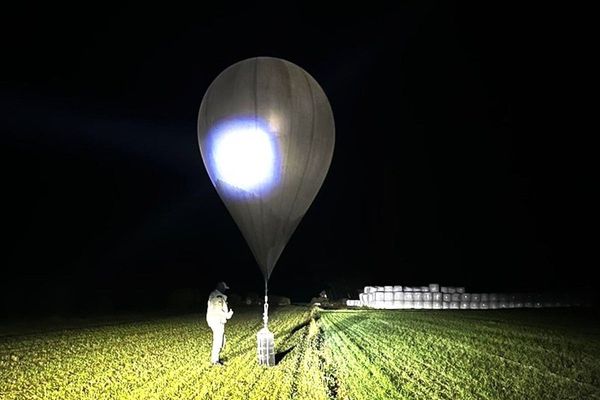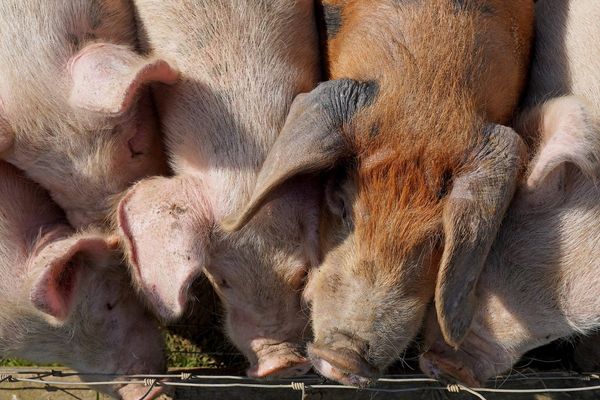
In January 2021, when Covid deaths were surging and many preschools were closed, Netflix launched a show about a girl who wears cat ears, sings cheerful songs about science and says things like “miaow-mazing”, “pawesome!”, “ab-so-cat-a-loutely” and “hug attack!”
Gabby’s Dollhouse may be unfamiliar to anyone who does not cohabit with young kids, but it was a balm for many during that bleak winter, when anxiety and screen time shot up across the world. Gabby – a wholesome, upbeat girl who lives in a cat-themed world – became an avatar for resilience, cuteness and hope.
In its almost three years and eight series, it has frequently made Netflix’s top 10 in 57 countries and has spawned a toy industry to make Barney weep. It was recently named the US’s second-biggest preschool toys license, with more than 1 million of its mint green and pink cat-themed doll’s houses sold. It has spawned conspiracy theories, too: on Reddit and TikTok, armchair detectives speculate that the actor who plays Gabby, Laila Lockhart Kraner, is 25 years old (“she looks like she has two kids and a mortgage!” says one on Tiktok).
Gabby’s Dollhouse was created by kids’ TV royalty: Traci Paige Johnson and Jennifer Twomey, who met working on Nickelodeon’s educational show Blue’s Clues; Johnson was a co-creator and Twomey a producer. They hadn’t planned to launch Gabby’s Dollhouse during the pandemic, though the idea – which began as a pitch deck in 2016 – was always to create a programme with goodness baked into its core.

“Gabby’s is all about grit and determination,” says Twomey, who co-created another Nickelodeon kids’ TV hit, Team Umizoomi. The show was also about “wish fulfillment” from the start, taking inspiration from the toys she and Johnson loved as kids: doll’s houses and miniatures. Doll’s houses, says Twomey, are a “fantasy world – you can go anywhere your imagination can take you”.
Johnson and Twomey assure me that Kraner is not secretly an adult. She was 11 when she got the role and is now 15. She lives in the suburbs on the east coast and goes to regular school. Are there concerns about her ageing out of the show? So far no, says Twomey: “The kids are 100% with her. She’s that aspirational, cool role model, the ultimate babysitter.”
Casting Kraner was quite the process. DreamWorks, which commissioned the show in 2017, auditioned 1,500 actors on screen, then sent Johnson and Twomey 500 to whittle down. When they saw Kraner, they just knew. She had “natural spontaneity”, says Twomey. “Even when she would make mistakes, she would improv, like, ‘Oops!’ – and that’s so growth mindset,” says Johnson.
The lead character was partly based on Twomey’s daughter, who is called Gabby and who Johnson says epitomises “the best growth mindset”, a phrase they talk about a lot. This idea – that skills can be improved through work, that a person need not give up if they fail first time – is the “curriculum” of the show, or, as Johnson puts it, the “vitamin”. They cite the psychologist Carol Dweck’s book Mindset and studies that suggest growth mindset can be learned, especially at preschool age. On screen, Gabby models this behaviour, saying things like “we failed fantastically!” or “practice makes better”. Johnson adds: “We have this captive audience that is growing and absorbing; why not give them these good messages?”
Johnson and Twomey are best friends. They largely work on the show remotely, from Johnson’s apartment in Harlem, where I meet them and find them as sunny as you would hope. “I get to work with my best buddy,” says Twomey – whose phone lock screen features pictures of the show. She describes herself and Johnson as “in touch with our inner preschooler” and compares working together to “having a playdate”.

The show was initially aimed towards girls, which is how the fanbase skews, though the Gabby fan in my home is a boy, and the creators say the way they think about preschool play is “very gender neutral”. They point out that many of the cat characters are boys: “We love having things where boys do so-called ‘girl’ things and girls do so-called ‘boy’ things and it’s all just imagination and creativity and fun – and everyone can play,” says Johnson.
Layered on top of the show’s old-school inspirations are references to internet phenomena, such as cute cat videos. (At one point Johnson and Twomey decided to “catify everything”, says Twomey. Almost everything on set has little ears – “the toaster’s catified, the refrigerator’s catified” – which has proved useful for merchandising). Another inspiration was something many parents dislike: YouTube unboxing videos. Yes, says Twomey, the endless clips of children opening toys can feel “a little creepy” – but the videos resonate with kids. “Then it was like, well, who doesn’t love to open presents? What’s better than that? So how do we make this … not creepy?” The idea was to “make that more story based, more narrative”.
The result could have been precision-targeted for children stuck inside the house. In each episode, Gabby receives a cute package to unwrap. The item inside (a mermaid tail; a bracelet; a map) sparks a story and with a pinch of her magic cat ears, Gabby metamorphoses into a tiny animated version of herself. The live-action version of Gabby never leaves her room. Rather, it is her cartoon incarnation, the visualization of the power of her imagination, that enters her cat-themed doll’s house and goes on a quest. She’s joined by her pals including the rascal Cat Rat, the half-kitten-half-cupcake Cakey, and DJ Catnip who – as parents often point out on the kids’ TV Reddit thread Daniel Tiger Conspiracy – sometimes plays genuine party bangers.
Gabby’s has a Pinterest-era focus on craft projects, too – which proved particularly appealing for artistic parents during the pandemic (on YouTube, clips such as Crafting Fun Rainbow Soaps with Gabby! have been viewed 30m times while the Gabby’s Dollhouse YouTube channel has had more than a billion views). For the rest of us, the mere presence of crafting on the show helped make Gabby’s feel more wholesome, less guilt-inducing, than other nonsense we had to plonk our children in front of.

Dr Maya Lennon, a children’s media and Stem researcher, believes that the quality of the shows kids watch is paramount. She is pro-Gabby’s in part because it encourages co-viewing and parental involvement, and in part for its representation. A lot of preschool TV characters tend to be male, plus, “I love the fact that she’s a brown girl,” says Lennon of Kraner, who has a Dominican father and Russian Jewish mother. “There isn’t a lot of representation of children of color in preschool shows and representation is just so important,” she says.
Celebrity parents have been celebrating its soothing powers, too. Chrissy Teigen recently thanked the show, on Instagram, for “the gift of some peace and rest” while she and her kids were sick; the model Chanel Iman threw her five-year-old daughter a Gabby’s Dollhouse-themed sleepover. Amanda Seyfried sang the theme song on The Tonight Show with Jimmy Fallon because, she said, it was always playing on a loop in her head. “It’s a great show and I love it, I really do,” she said, smiling a soupçon sarcastically, through gritted teeth.
As Seyfried knows, though the show’s tone is parent-friendly, the narrative and script isn’t for her. Unlike in the kids’ animation Bluey, which feels as much a fantasy of ideal parenthood as it is a show for kids, parents do not appear. There is only a very sweet, sincere little girl and her feline sibling proxies. There are no knowing winks, no adult jokes.
This is in evidence when I sit in on a Zoom script session for an episode inspired by The Wizard of Oz. There are many cat puns. The producers, and the writer Caitlin Hodson, say things like “how do we Gabbify it?”, cackle about Cat Rat playing the Wizard of Miaow (“that’s perfect for Cat Rat – the false modesty”) and delight at a suggestion about Gabby unboxing tiny sparkly sneakers. They think very deeply, about which cat will be the witch (“it needs to be clear that we’re playing – that Mercat hasn’t turned mean”) and how to ensure there are stakes for the quest, but nothing too scary (they quickly swerve away from referencing a tornado taking away the doll’s house, for example).
The reassuring-ness of Gabby’s Dollhouse, for preschoolers themselves, is particularly clear in the moments when Gabby breaks the fourth wall to ask viewers for help on her quest (“tell me when you see the pink mermaid’s tail!”) and thanks her tiny disciples afterwards. What preschoolers want emotionally from a show, says Johnson, “is to be heard. That’s what we’ve learned on Blue’s Clues – if you look at the camera, and you wait for a pause, it’s like, ‘Ah, I’m here. I’m invited. They’re being seen and they’re being played with.’” There is always one seat left free at the table, where the camera is positioned. The idea, says Johnson, is that viewers “automatically feel like you belong. And you’re welcome here. And we want to play with you.”
This is a world apart from much of today’s kids’ entertainment landscape, which is dominated by frenetic YouTube-spawned nursery rhyme shows such as CoComelon, which many parents ruefully refer to as “cocaine for babies” (its creators test the show to make sure children are mesmerised by every frame). Such shows are big business: last year CoComelon’s creator, Moonbug Entertainment, was acquired for a reported $3bn by a venture created by former Disney executives. They represent an upending of the business model – via streaming and YouTube – that can be brutal for creators on the ground. The landscape is nothing like the old days of just a few channels, in which gentle, educational shows like Mr Rogers’ Neighborhood and Sesame Street became cultural touchpoints. “There is just so much choice, so many avenues. We have so many friends and colleagues who are doing amazing shows that aren’t taking off, just because there’s so much competition,” says Johnson.

For all of its wholesomeness, Gabby’s Dollhouse is also a brand targeted towards an era in which only the strongest IP will survive – from DreamWorks Animation’s earliest involvement, says the company’s head of TV development, Teri Weiss, who commissioned the show, it was “a franchise, not just a TV show – a capital-F franchise” with toys and other brand extensions marketed hard. A giant mascot version of Gabby already appears as an attraction at Universal Studios in Florida, with more Gabby planned for the forthcoming DreamWorks Land, which will open there next year.
You hope that the idiosyncrasy – and the sense, among parents, that this is a show first and not a vehicle for the sales of toys – will survive the turbo Franchise treatment long term.
Still, Johnson says she and Twomey aren’t too involved in the toys. They do have “world Gabbification” in mind, but they are not talking about the bottom line. “It’s very powerful, our position of creating children’s media – we take it seriously,” says Johnson, pointing out that as adults, we tend to remember the shows we loved as kids. One day Gabby’s fans will grow up, she says, and when they err they may find themselves saying “whoopsie, I made a mistake”, she says, slipping into song. “OK. Like: that’s cool. Our plan is working!”
This article was amended on 15 November 2023 to update Teri Weiss’s job title.







